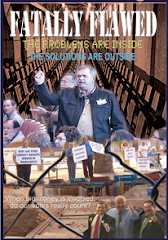Consortium News
November 2, 2009
When the U.S. health care debate began last spring, the insurance industry and its congressional defenders fretted over the prospect that 119 million Americans might defect from private insurance to a public option, thus devastating the business model of wealthy insurance companies.
Since then, however, the industry has won so many concessions that the threat from the surviving public option has shrunk to about five percent of its feared effect. In assessing the House leadership’s health reform bill, the Congressional Budget Office projects that only six million Americans could or would sign up for the bill’s version of the public option.
And, to make the picture even prettier for the insurance industry, many of those six million would be the chronically ill, customers that the private insurers don’t want anyway.
Because of unified Republican resistance to any health-care overhaul and the objections of conservative and rural Democrats, House Speaker Nancy Pelosi scrapped her goal of a “robust” public option, one whose payments would be linked to Medicare rates and thus could have saved substantial money for the insured and the government, about $110 billion over the next 10 years, the CBO estimated.
Instead, Pelosi accepted a version of the public option which would require the government to negotiate rates with health providers just as private insurers do. That means the pressure to hold down medical costs would be much less and the potential savings would largely disappear.
Indeed, the CBO projects that the public option would have to charge premiums higher than private insurers because people with illnesses would turn to the public option as a more reliable way to get their medical treatment than what they could expect from profit-making companies, which would still look for ways of minimizing payouts
For the rest of the story click here.
Here are two related articles. Public Option Plan Will Cover Few Americans, New Statistic Reveals and The Two Percent Robustness.
















